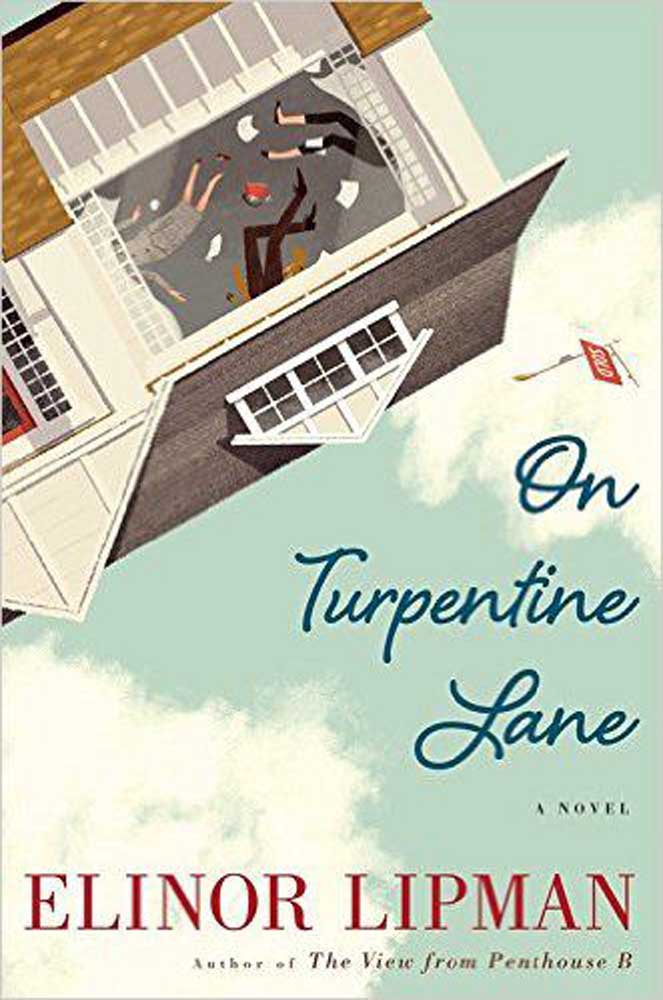In Joan Juliet Buck’s memoir, a parade of stars and styles
Published 7:00 pm Friday, February 24, 2017

- In Joan Juliet Buck’s memoir, a parade of stars and styles
“The Price of Illusion:
A Memoir” by Joan Juliet Buck (404 pages, Atria Books, $30)
Joan Juliet Buck, the daughter of the film producer Jules Buck, and Anjelica Huston have been friends since girlhood. It’s the kind of friendship that requires long spells of angry silence between them, and Buck’s new memoir makes it easy to understand why. She was the older of the two, and the bigger name-dropper by far.
During one of Buck’s visits to St. Clerans, the Hustons’ grand Irish homestead (about which Buck rhapsodizes as romantically as any Huston ever has), Anjelica showed Joan the old dairy that served as her playhouse. Joan replied: “I used to live in a palace, too, but mine was pink marble.”
“The Price of Illusion” takes Buck from that gaudy palace of her 1950s youth (a “1900 copy of the Grand Trianon at Versailles, but smaller,” located in an unfashionable Paris suburb) to the haute halls of French Vogue’s offices, where she eventually presided as editor-in-chief.
Story arc alert: After occupying this pinnacle of fashion power from 1994 to 2000, Buck was edged out of French Vogue — and would be banished from the Condé Nast kingdom again years later. She is now living happily ever after in upstate New York as the authentic, simplicity-loving person she never had a chance to be.
But few will come to “The Price of Illusion” for its lessons in fabulousness rehab. This eagerly dishy book’s main draw is its march of stars and styles. Yes, Buck has mastered the art of couturier-dropping, too. We hear a lot about what Buck wore, and when. We learn that Manolo Blahnik was her “matron of honor.” When hired by Vogue, Buck was told she would have to meet people like Karl (Lagerfeld) and Yves (Saint Laurent). But she had known them — and their friends, their muses and photographers — long before she was even a glint in Vogue’s eye.
As a young girl, she knew only that “Peter Autoul,” as she thought of him, was an Irishman with brown, curly hair and a slightly crooked nose who had something to do with her father’s business and might be a big success some day. That was before Autoul — actually Peter O’Toole, who had formed a production company with Buck’s father — appeared in his first conspicuous movie and agreed to the hair color and nose changes that would land him the role of T.E. Lawrence in a big desert spectacle. “Lawrence of Arabia” was the only O’Toole movie that Jules Buck did not produce between 1959 and 1975, the glory years of the actor’s career.
When O’Toole squired Joan to the premiere of “Lord Jim,” he gave her enduring advice for how, at least, to look like him in the spotlight: “Shut your mouth and look surprised.” But he “gave no clue as to how to raise the inner edges of his eyebrows to create the expression of amused disdain that made him look like a prince,” Buck remembers now.
During her teens, as she tells it, Buck became a romantic magnet for talent. In London, at 17, she met a writer who was just beginning to become very well known. “What is the most important thing in the world?” she asked him. “Status,” he said, “and added that he’d marry me if I wrote a book.” She didn’t write a book, and he didn’t marry her, but she says she gave him one of the phrases for which he remains best known. The phrase is “starved to near-perfection,” and the man was Tom Wolfe.
Think of anyone who had cachet in the worlds of movies, literature or fashion, starting in 1970 or so, and chances are good that they pop up in this book, even if all Buck ever did was consider the person’s proposition and turn it down. Go to the Greek Island of Hydra with Leonard Cohen after meeting him only casually? She thought his skin might be wrinkly, so made apparently weak excuses. He sent her flowers with a note that read, “Never lie to a great poet, or even a minor one.”
Despite their globe-trotting and anything but parallel careers, Buck and Huston seemed to maintain a competition, mostly at Buck’s instigation. She acknowledges being envious of Huston’s acclaimed acting career and movie star boyfriend (Jack Nicholson).
Buck, who did a lot of interviews with stars, went to the set of “1900” and wound up falling hard for Donald Sutherland.
But however well Buck knew free-range celebrities, she wasn’t truly intimate with the way the fashion world worked until she became part of it. The book describes her naive shock at seeing erstwhile friends in the business start behaving like advertisers; trying to be politically and culturally neutral in her wardrobe choices (not easy at all); and deciding what kinds of values Vogue ought to endorse. Less interesting: thoughts about whether or not her apartment was haunted, notes on office politics and even this quick, witty summary of a runway show: “Lights, music, girls, no plot.”
There are many things in “The Price of Illusion” that don’t sound candidly complete. But Buck has been a fabulous Zelig in the world of memoirs. She has witnessed or experienced a book’s worth of tellable tales, tall or otherwise. She’s certainly entitled to a version of her own.






